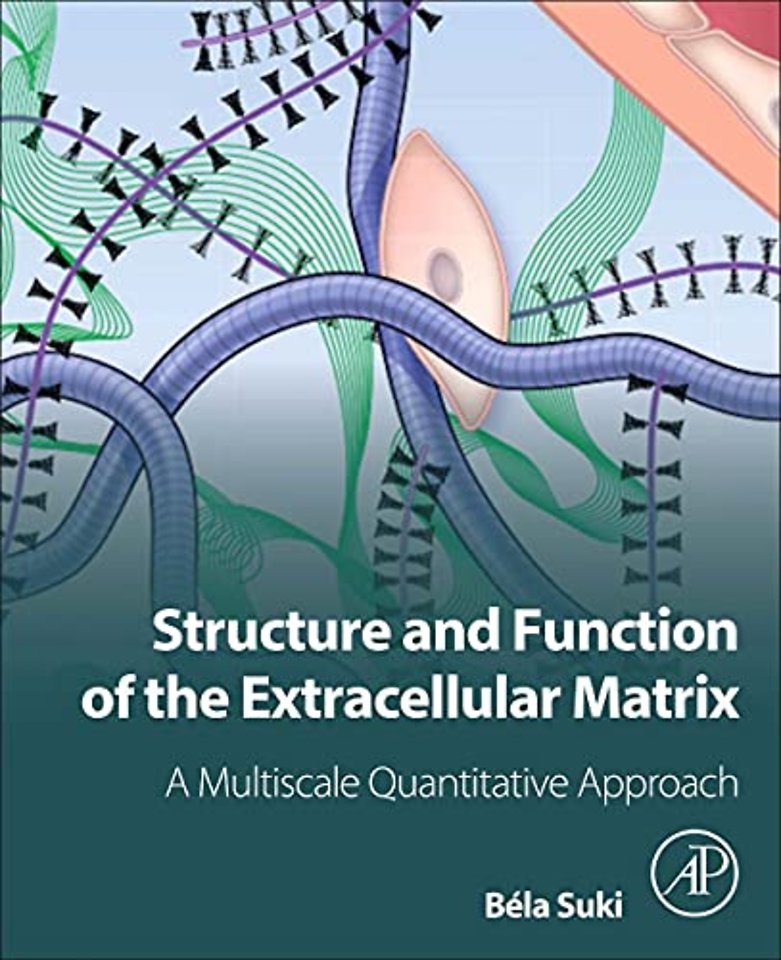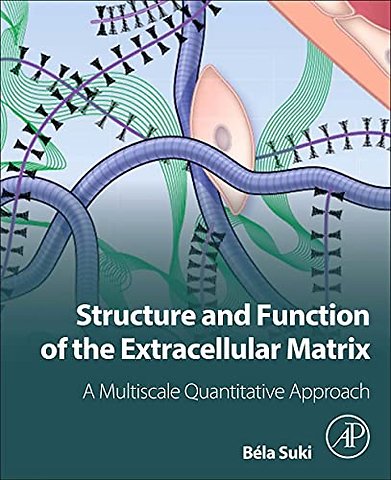<p>Preface ix</p> <p>Definition of symbols xi</p> <p>1. Introduction to structure-function relationships</p> <p>What is structure? 1</p> <p>What is function? 1</p> <p>What are structure-function relations? 2</p> <p>The multiscale nature of structure-function relations 3</p> <p>Evolutionary aspects 4</p> <p>Implications for science and medicine 5</p> <p>References 6</p> <p>2. Extracellular matrix background material: Building blocks, general structure, mechanics, relation to cells, and evolutionary aspects</p> <p>The building blocks and the structure of proteins 9</p> <p>General properties and organization of the ECM 11</p> <p>Mechanical forces, stresses, and stiffness 14</p> <p>Relation of the ECM to cells 19</p> <p>ECM and evolution 21</p> <p>References 25</p> <p>3. The collagen molecule</p> <p>Collagen classification 29</p> <p>A brief evolutionary history of the collagen family 31</p> <p>Structure of the collagen molecule 33</p> <p>Biosynthesis 35</p> <p>Collagen functions 36</p> <p>Collagen binding properties 38</p> <p>Collagen elasticity 39</p> <p>Polymer-based modeling: The mechanical properties of the molecule 44</p> <p>Structural models of the collagen molecule 45</p> <p>Effects of mutations on molecular structure and function 49</p> <p>References 52</p> <p>4. Collagen supramolecular structures: Evolution, organization, and biogenesis </p> <p>Evolution of the fibril and the diversification of the collagen family 56</p> <p>Multiscale nature of fibril structure 59</p> <p>Network structure of type IV collagen 62</p> <p>Fibril formation 64</p> <p>Modeling fibril growth 67</p> <p>References 73</p> <p>5. Collagen suprastructures: The data and the models Structure and function of type IV collagen networks 78</p> <p>Quantitative analysis of structure-function relations in the glomerular basement membrane of the kidney 80</p> <p>Structure-function of elastic networks from the point of view of percolation: Implications for tissue engineering 85</p> <p>Microscopic structure-function relations of the collagen fibril 88</p> <p>Multiscale mechanical properties of the collagen fibril: The data 91</p> <p>Modeling fibril function: From simple to complex 96</p> <p>Is fibril viscoelasticity a signature of hidden complexity? 100</p> <p>References 108</p> <p>6. Selected examples of tissue-level collagen suprastructures: Tendon, bone, and skin</p> <p>Basic structure and function of the tendon 113</p> <p>Modeling the recruitment of wavy fibrils during tendon stretching 114</p> <p>Modeling tendon rupture 119</p> <p>A brief introduction to the evolutionarily shaped structure and function of the bone 120</p> <p>Examples of multiscale structure-function relation in bones 123</p> <p>The evolution and basic function of the skin 128</p> <p>Multiscale mechanics and tear resistance of the skin 130</p> <p>A note on the biological significance of recruitment 136</p> <p>References 139</p> <p>7. Small leucine-rich proteoglycans: The tiny controllers of the extracellular matrix</p> <p>Basic structure and evolution of SLRPs 143</p> <p>Biological functions of SLRPs 146</p> <p>The PG interaction network 149</p> <p>Physiological functions of SLRPs 151</p> <p>Influence of GAGs on lung parenchymal mechanics 155</p> <p>Summary 159</p> <p>References 159</p> <p>8. Hyaluronan and hyalectans: The good, the bad, and the ugly</p> <p>Evolutionary history 166</p> <p>The structure of the HA-hyalectan aggregate 167</p> <p>Binding and molecular to cellular functions 171</p> <p>Microscale physiological functions 173</p> <p>Structure and function of the endothelial glycocalyx 176</p> <p>Physiological functions 179</p> <p>The bad and the ugly 184</p> <p>Summary 187</p> <p>References 188</p> <p>9. Elastic fibers: The near ideal linear springs of the extracellular matrix</p> <p>Evolution of elastin 194</p> <p>The tropoelastin gene structure 196</p> <p>Structure, disorder, and aggregation 197</p> <p>Mechanical properties of tropoelastin 201</p> <p>Microfibrils 204</p> <p>Elastogenesis: How to build a network of elastic fibers 206</p> <p>Elastic fibers: Are they ideal linear springs? 208</p> <p>A brief summary on organ-level function and its breakdown 217</p> <p>Final notes on the near ideal spring 219</p> <p>References 223</p> <p>10. Modeling maintenance and repair: The matrix loaded</p> <p>Evolution of homeostasis and repair 230</p> <p>A continuum approach to ECM growth and remodeling 235</p> <p>Dynamics of homeostasis and structural remodeling 237</p> <p>Fluctuation-driven homeostasis 240</p> <p>A toy model of self-healing 243</p> <p>Agent-based modeling: The network paradigm 245</p> <p>The uninvited aging: Maintenance and repair slipping out of control 249</p> <p>What have we learned? 250</p> <p>References 251</p> <p>11. Outlook</p> <p>Index 259</p>

